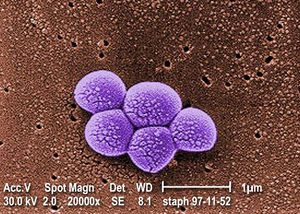The Effects of Sweeteners in the Gut Microbiome: Difference between revisions
| Line 3: | Line 3: | ||
<b>By Matthew Nguyen </b> <br> | <b>By Matthew Nguyen </b> <br> | ||
Within the last decade, sweeteners have begun to play a crucial role in today’s society. Many people have started to look into new forms of sweeteners, both artificial and natural, to help meet caloric intake goals as well as for overall enjoyment of food and beverages being consumed. From stevia to aspartame, more and more sweeteners are being discovered and being approved by the Food and Drug Administration (FDA). Though consuming these lower calorie sugars may be beneficial for meeting calorie goals, it may not be beneficial for gut health in the long-run. Many factors contribute to why a person chooses to consume artificial sweeteners, including socioeconomic status and health goals. There have been many pros and cons found related to the consumption of artificial sweeteners. Throughout this review, we will discuss what effects sweeteners can have on the human gut microbiome and discuss if sweeteners really are beneficial to humans or if it's just hurting their bodies. Understanding the effects that sweeteners can have on the gut microbiome is beneficial for understanding what foods should and should not be consumed on a daily basis. | |||
<br>At right is a sample image insertion. It works for any image uploaded anywhere to MicrobeWiki.<br><br>The insertion code consists of: | <br>At right is a sample image insertion. It works for any image uploaded anywhere to MicrobeWiki.<br><br>The insertion code consists of: | ||
Revision as of 13:54, 13 April 2024
Introduction

By Matthew Nguyen
Within the last decade, sweeteners have begun to play a crucial role in today’s society. Many people have started to look into new forms of sweeteners, both artificial and natural, to help meet caloric intake goals as well as for overall enjoyment of food and beverages being consumed. From stevia to aspartame, more and more sweeteners are being discovered and being approved by the Food and Drug Administration (FDA). Though consuming these lower calorie sugars may be beneficial for meeting calorie goals, it may not be beneficial for gut health in the long-run. Many factors contribute to why a person chooses to consume artificial sweeteners, including socioeconomic status and health goals. There have been many pros and cons found related to the consumption of artificial sweeteners. Throughout this review, we will discuss what effects sweeteners can have on the human gut microbiome and discuss if sweeteners really are beneficial to humans or if it's just hurting their bodies. Understanding the effects that sweeteners can have on the gut microbiome is beneficial for understanding what foods should and should not be consumed on a daily basis.
At right is a sample image insertion. It works for any image uploaded anywhere to MicrobeWiki.
The insertion code consists of:
Double brackets: [[
Filename: PHIL_1181_lores.jpg
Thumbnail status: |thumb|
Pixel size: |300px|
Placement on page: |right|
Legend/credit: Magnified 20,000X, this colorized scanning electron micrograph (SEM) depicts a grouping of methicillin resistant Staphylococcus aureus (MRSA) bacteria. Photo credit: CDC. Every image requires a link to the source.
Closed double brackets: ]]
Other examples:
Bold
Italic
Subscript: H2O
Superscript: Fe3+
Sample citations: [1]
[2]
A citation code consists of a hyperlinked reference within "ref" begin and end codes.
To repeat the citation for other statements, the reference needs to have a names: "<ref name=aa>"
The repeated citation works like this, with a forward slash.[1]
Section 1
Include some current research, with at least one figure showing data.
Every point of information REQUIRES CITATION using the citation tool shown above.
Section 2
Include some current research, with at least one figure showing data.
Section 3
Include some current research, with at least one figure showing data.
Section 4
Conclusion
References
Authored for BIOL 238 Microbiology, taught by Joan Slonczewski,at Kenyon College,2024
